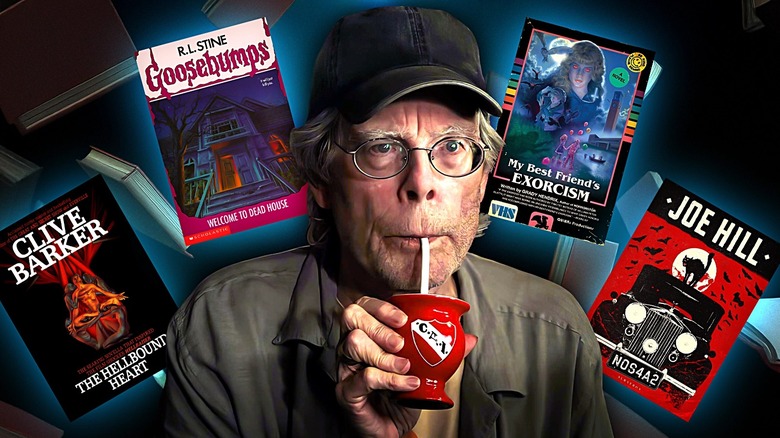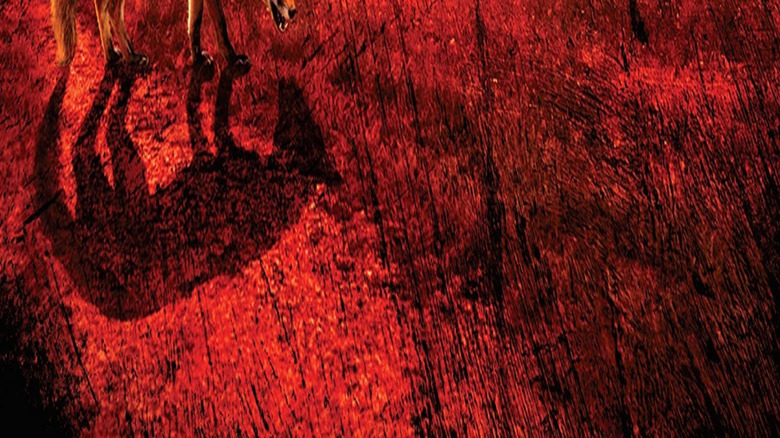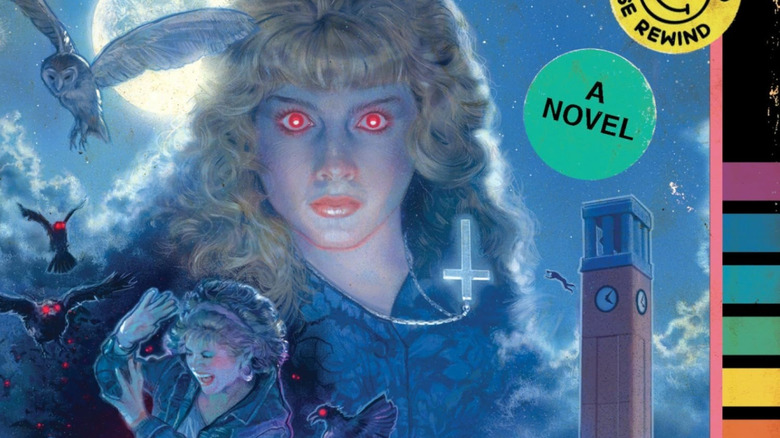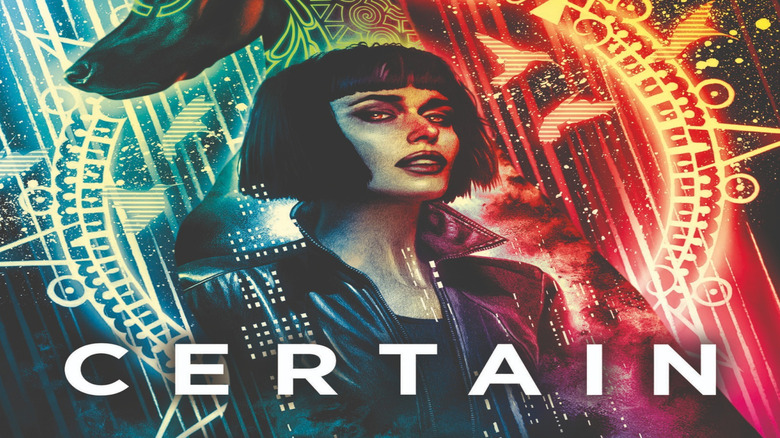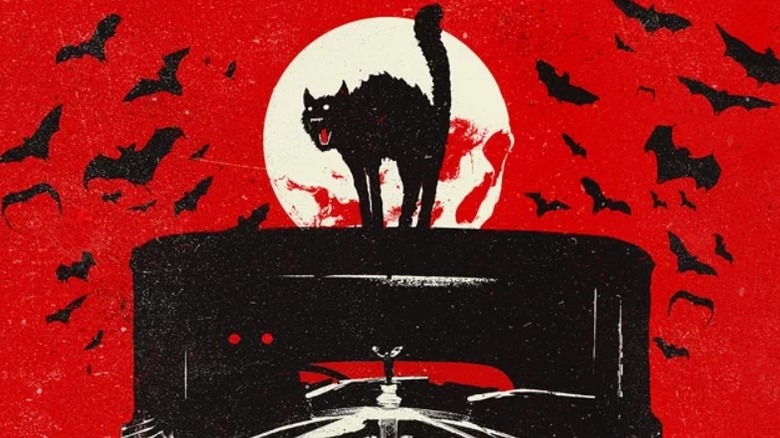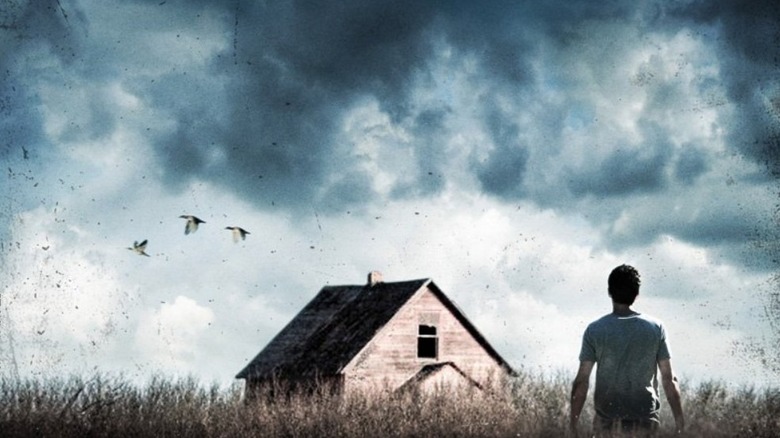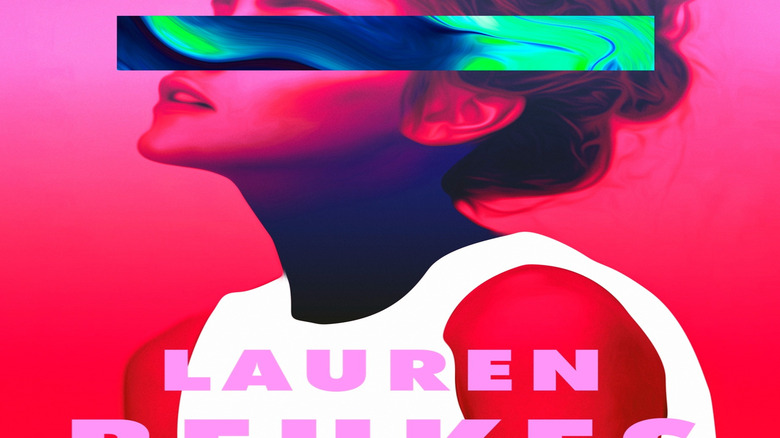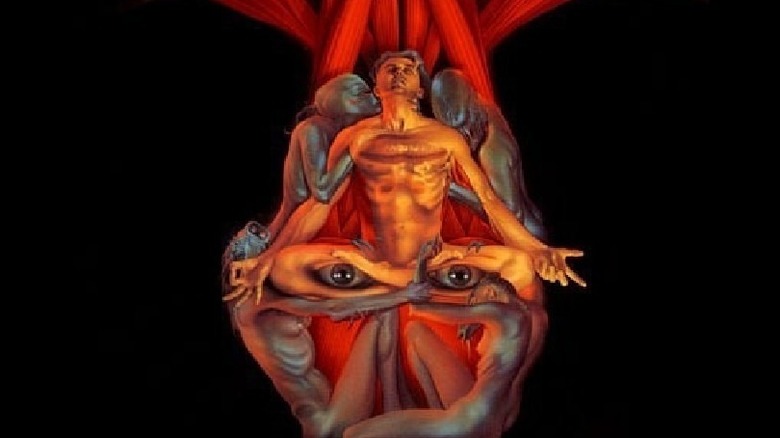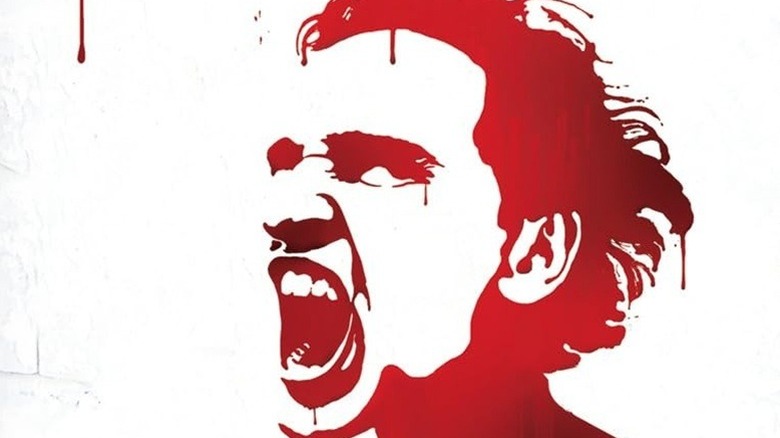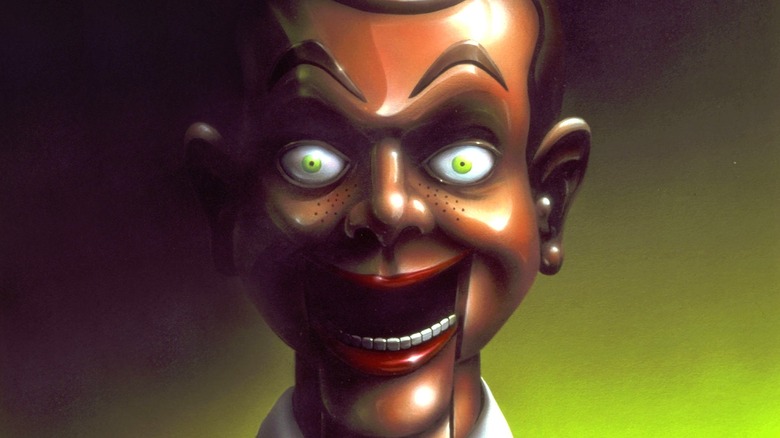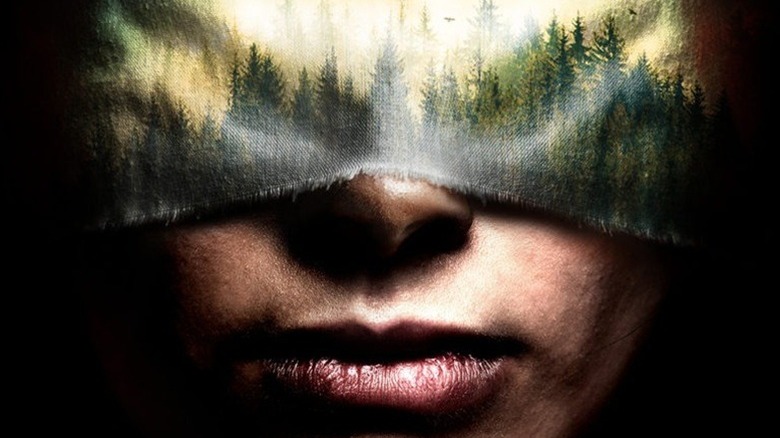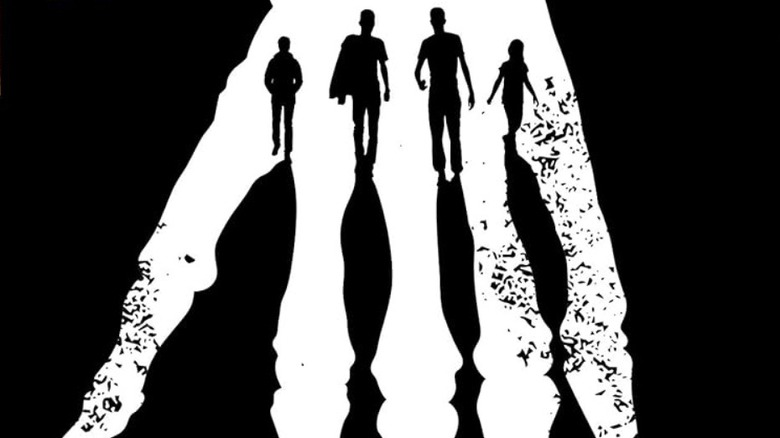12 Best Horror Writers To Read If You Like Stephen King
Stephen King needs no introduction, having written himself — quite literally — into any horror writer hall of fame. There's something about Stephen King's books that hit differently, as he pens real stories about people put into the most haunting of situations. No one walks away from a King story unscathed. neither the characters nor the readers.
While King is prolific enough, it's good to expand the horizons and discover other similar horror writers. Now, these aren't the clowns who ask ChatGPT to write a story in a Stephen King style for them, then present it to the world as some form of high art because a machine puked it out for them. No, these are the authors who either have King's influence sprinkled over their work or apply similar traits to their writing style, but they still find the space to add their own personal touches and make it authentically them.
It's important to bear in mind that King has served as an inspiration for several generations of novelists, so there will be a number of names missing here that just missed the cut-off mark. Sorry, folks, but to quote Frank Sinatra, "That's life." From Paul Tremblay to Joe Hill, let's take a look at the best horror writers to read if you like Stephen King.
Paul Tremblay
Stephen King's endings have a reputation for disappointment, due to how dark or depressing they are. Well, Paul Tremblay might give King a run for his money in this department here. No spoilers, but Tremblay's "The Cabin at the End of the World" tears out hearts and stuffs them in a blender, delivering the kind of conclusion that won't leave a dry eye in the house. While Tremblay thinks the M. Night Shyamalan adaptation of his novel, "Knock at the Cabin," features a darker ending, I must respectfully disagree, because the novel's finale slices into the soul's arteries.
Taking a page out of King's book, Tremblay isn't afraid of putting his characters through the most, creating situations where loss is greater than the proverbial "monster" of the story. He certainly found a fan in King, who took to Twitter (now known as X) to declare that Tremblay's 2015 novel "A Head Full of Ghosts" did what few books do, as it "scared the living hell out of [him]." It's tough to argue with this assessment of the Bram Stoker Award-winning novel that sees a family agree to appear on a reality series covering their daughter's alleged demonic possession and exorcism.
Tremblay has also spoken positively of King's work in the past, explaining how he only started reading for enjoyment in his 20s. However, once he began, he devoured all of King's work.
Grady Hendrix
While Stephen King receives acclaim for his ability to terrify, his sense of humor often goes underappreciated. Be it through his laugh-in-one's-sleeve descriptions of characters or what people find lurking in the toilet bowl, King knows when to throw in a hilarious section or two to have his readers doubling over. Grady Hendrix takes this aspect of King's work and turns it up a notch.
Hendrix loves to play in the horror and supernatural genres, whether it be exploring strange occurrences in a mass-market furniture store in 2014's "Horrorstör" or a book club investigating a suspicious neighbor in 2020's "The Southern Book Club's Guide to Slaying Vampires." The author knows how to scare, but there's also an acute self-awareness to explore the humorous aspects of these stories. Hendrix doesn't do it to the goofy extent of "Scary Movie," but he understands how to toe the line of winking at the reader and respecting the story being told. For example, Hendrix used the allegory of a demonic force in "My Best Friend's Exorcism" to explore teenage fears and hopes.
Much like King, Hendrix is a horror writer who also possesses a commercial sensibility that lends itself to adaptations. Unsurprisingly, the rights to adapt "The Southern Book Club's Guide to Slaying Vampires" turned into a major bidding war among buyers.
Silvia Moreno-Garcia
Anyone familiar with Stephen King's books knows how important Maine is to the author. Not only is it a common setting for most of his novels, but it also feels like its own character. The reason for this is simple: Maine is King's home state and has become a part of his identity. Similarly, author Silvia Moreno-Garcia grew up in Mexico and uses the country as a background setting for several of her stories. Like King's Maine, though, the environment comes alive. In Moreno-Garcia's "Certain Dark Things," Mexico City stands out as much as the reimagined lore about vampires, as if it's its own layered character promising both opportunity and danger.
Moreno-Garcia's work celebrates diversity and isn't afraid to weave in between the genres of horror and gothic, such as in "Mexican Gothic." Her stories are quite unlike many of her contemporaries, as the author tries to elicit feelings from the readers rather than total understanding of what's taking place. "When I was growing up and my great-grandmother told me stories I didn't ask 'why,'" Morena-Garcia told Speculating Canada. "Why did the witch turn into a ball of fire? Why is there a lion loose in the sierra? I accepted it all. But it did evoke feelings and it painted pictures in my mind."
Joe Hill
Being a writer and Stephen King's son must be like wanting to be a basketball player and following in the footsteps of Michael Jordan. However, Joe Hill has more than proven he's capable of shaping his own creative path, rather than walking in the shadow of his famous father. He chose to abbreviate his middle name (Hillström) to not use the King surname, while he worked for almost a decade before anyone found out about the familiar connection. That being said, no one can dispute the obvious similarities in Hill and King's work.
The short story "The Black Phone" feels like something straight out of King's wheelhouse (and it was adapted into a great horror film from director Scott Derrickson), Meanwhile, the chilling "NOS4A2" wouldn't be out of place alongside something like "It." Hill doesn't disagree with this sentiment, telling Writer's Digest that "NOS4A2" has "joking references" to his father's book about a cosmic entity that takes the form of a child-murdering clown named Pennywise. "In some ways, 'NOS4A2' is a book about Stephen King novels," Hill said. "It is a kind of response to my dad's book 'It,' which I loved as a kid. If you scratch the surface, it's possible to see that 'NOS4A2' and 'It' share the same underlying structure."
Dean Koontz
One of the best horror writers to read if you like Stephen King is Dean Koontz. If you think King is prolific, then Koontz takes it to another level, publishing enough novels to get him his own dedicated section in a library. Impressively, he does it across a multitude of genres to the point that it's difficult to pinpoint which genre he's made the biggest impact in. (Spoiler alert: It's all of them!)
Also, like King, Koontz prefers to make his novels easily readable and accessible to the general public rather than fall into the literary fiction category. This isn't a criticism of their style at all, as most writing teachers advise their students to use language that's clear and concise to reach a wider audience.
King and Koontz must also share a muse. A novel like "Phantoms," which was adapted into a film starring Peter O'Toole and Rose McGowan, contains strong H.P. Lovecraft influences and explores a town where its inhabitants start to die under mysterious circumstances before it's discovered there's an ancient creature on the loose. Sounds like the perfect companion book to "The Mist," right?
Lauren Beukes
South African author Lauren Beukes doesn't like the constraints of genre, preferring to rip off the shackles of convention to tell the story she needs to without boundaries and expectations. While she received attention for her South Africa-centered novels "Moxyland" and "Zoo City," it was "The Shining Girls" that brought her mainstream attention. The story follows a time-travelling serial killer and one of his targets who decides to turn the tables on him, which was a compelling enough premise to get adapted into a creepy Apple TV+ series starring Elisabeth Moss.
It isn't too difficult to look at Beukes' writing in "The Shining Girls" or "Broken Monsters" and draw comparisons to Stephen King's more suspenseful novels — such as "The Outsider," which centers around a mystery about a shapeshifting creature wreaking havoc on people's reputations. King is unabashed in his love for pulpy thrills and spills all in favor of taking the reader on an unexpected wild ride, and Beukes demonstrates a similar appreciation for twisty stories that keep the audience guessing right until the end.
Clive Barker
Out of all the horror writers on this list, Clive Barker is the one whose prose differs the most from Stephen King. Barker uses more poetic language and takes the elevator down to the Bad Place to find inspiration to conjure up the most hellish imagery. However, both King and Barker have one thing in common: They know how to craft unforgettable characters that lend themselves well to other adaptations.
King has the likes of Pennywise the Dancing Clown, Jack Torrance, and Kurt Barlow, but Barker has his own tricks up his sleeve. Barker's "The Hellbound Heart" might have been a novella, but the Cenobites introduced in the story became immortalized as the ultimate fiends in the "Hellraiser" movies — which look like they'll never end at this point (and neither should they). In addition to this, it would be foolish to not mention Candyman who was introduced in Barker's short story "The Forbidden" from "Books of Blood." The character turned into one of horror's premier boogeymen, thanks to the late Tony Todd's outstanding performance in the original films series, and continues to stay relevant in pop culture to this day.
David Moody
Stephen King largely steers away from the zombie genre, but it isn't difficult to imagine if he ever wanted to do a series of books that it would be something like David Moody's "Autumn." Similar to how "The Walking Dead" tackled the topic, "Autumn" doesn't try to turn into a George A. Romero film that's all about kicking zombie butt and avoiding becoming their next snack. Instead, it's an analysis of what survivors do when faced with end-of-the-world situations. Do humans stick together or turn against each? Hint: It's not the former.
Moody subscribes to the same writing school as King: Don't over complicate matters. Rather than describe a set of trees for 100 pages (looking at you, Tolkien), he keeps the plot moving briskly and onto the next chapter. That isn't to say there aren't vivid descriptions of the environment or strong character building, but they're more to the point.
Moody's work has attracted admirers from the film industry. "Autumn" was turned into an independent film in 2009, while Guillermo del Toro was attached to produce an adaptation of "Hater," a story where people become incensed and violent for an unknown reason. However, del Toro's attachment was circa 2008 and there have been no real updates on the project for the longest time.
R.L. Stine
Look, say what you want about Stephen King's books, but they aren't exactly aimed at children — unless you want the kids to never sleep again or develop coulrophobia and fear Pennywise the Dancing Clown for the rest of their lives. This is where author R.L. Stine steps in, acting as a gateway for the young ones before they enter the King phase of horror exploration.
Stine's "Goosebumps" series tingles the spine, as the author pushes the boundaries of kid-friendly terror. From an evil twin tale in "I Am Your Evil Twin" to ghosts and a haunted house in "Welcome to Dead House" and a possessed ventriloquist dummy in "Night of the Living Dummy," Stine has something and anything for everyone.
In an interview with Yahoo, Stine joked that he takes King's ideas and turns them into his own kid-approved novels, including "Pet Sematary" which he believes to be King's scariest story. Stine added, "I remember that I also said to him: 'Stephen, a magazine once called me a literary training bra for you,' which is true! And he said, 'Yes, I know.' I'm Stephen King for kids."
Josh Malerman
Josh Malerman proclaims that he's been a horror fan since he was 12 years old. After discovering "Twilight Zone: The Movie," he expanded his horizons and sought out all things horror, including Stephen King's books. It's no surprise to learn this, since King's "The Stand" DNA can be found in Malerman's work, especially his most famous novel, "Bird Box."
While not exactly the same as "The Stand," Malerman's "Bird Box" takes a few storytelling techniques out of King's toolbox. For one, it establishes itself in a post-apocalyptic world where hope is at an all-time low among society. Second of all, there's a clear set of rules as to how people need to survive in this new world. And three, don't get too attached to the characters as not all of them make it in the end.
What Malerman does well in "Bird Box" and its sequel, "Malorie," is play psychological games with the readers' minds as they fill in the blanks and intensify their own anxiety levels. Resultantly, many critics and fans labelled Malerman as the next coming of Stephen King. The cherry on the cake is that even the man himself told Malerman that he's a fan of his.
Alex North
Stephen King's stories often feature a town with a dark past or a secret that the people try to hide. Half the magic comes in uncovering the mystery and why everyone would rather try to suppress the truth than speak it aloud. Author Alex North appears to have learned a trick or two from King in this regard.
Two of North's most notable novels are about conquering the demons of the past. In "The Shadow Friend," aka "The Shadows," Paul leaves home after a tragic event, but returns two decades later to find a copycat killer repeating the same crimes from before. Similarly, "The Whisper Man" sees a serial killer known as the Whisper Man terrorize the town of Featherbank before being put behind bars. However, 15 years later, disturbances occur that make everyone wonder if the Whisper Man is not on the loose again.
It's no surprise that people have compared North's novels to King's. In fact, "The Woman in the Window" author A.J. Finn said that North's "The Shadow Friend" reads like a winning combination of Harlan Coben, Thomas Harris, and King.
Adam Nevill
Even though Stephen King delves into the supernatural and horrific, the greatest terror doesn't come from the monsters and antagonists of his stories. It's the sense of foreboding dread and doom around every corner. It's the real-life fear that something could take away that which you hold most dear at any second.
A horror writer who gets this is British author Adam Nevill. "I don't contrive any effects," Nevill told AutoCrit. "Imaginatively, at the very least, I invest myself into situations I find disturbing and difficult and uncomfortable, or terrifying. If I'm not affected by my own stories, no reader will be." This comes across in Nevill's novels such as "Lost Girl" where a four-year-old girl is kidnapped and her father does everything he can to find her in a future world engulfed by environmental decay and chaos. As Nevill revealed, this idea was spawned from the dread he feels as a father of a child and concern over climate change.
Nevill, like King, doesn't need to overdo it on the gore or over-the-top violence either. The writer lets the atmosphere soak the tale in an icy chill, while relying on the imagination to do the heavy lifting to frighten the reader. A good example of this is his creepy novel "The Ritual," which haunts and lingers as a friends' hiking trip goes terribly wrong.
